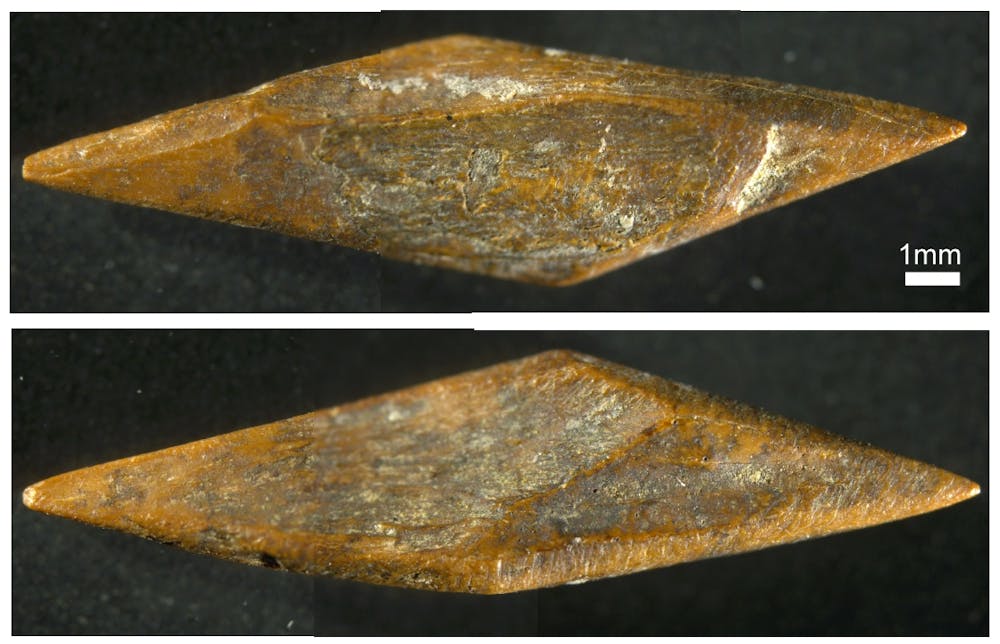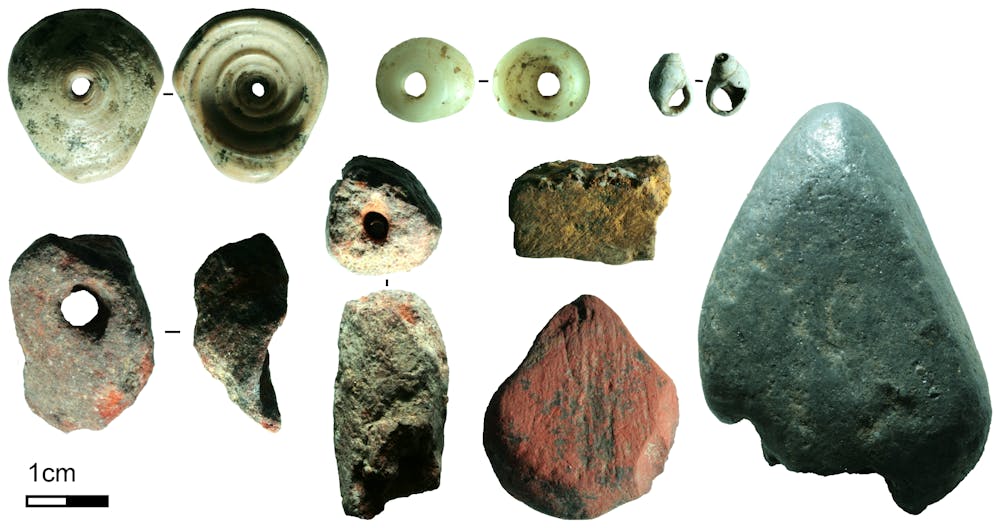Researchers unearth the oldest known Eurasian bow and arrow tech
Archaeological excavations deep within the rain forests of Sri Lanka have unearthed the earliest evidence for hunting with bows and arrows outside Africa.
At Fa-Hien Lena, a cave in the heart of Sri Lanka’s wet zone forests, we discovered numerous tools made of stone, bone, and tooth – including a number of small arrow points carved from bone which are about 48,000 years (Late Pleistocene era) old.
This evidence is earlier than similar findings in Southeast Asia 32,000 years ago and is currently the earliest clear evidence for bow-and-arrow use beyond the African continent

The island of Sri Lanka in the Indian Ocean, just south of the Indian subcontinent, is home to the earliest fossils of Homo sapiens in South Asia,” said lead author Dr. Michelle Langley of Griffith University and colleagues from Australia, Germany, Sri Lanka, Canada, and the United States.
Some of the biggest finds from this site include single and double pointed bone tools. Researchers speculate these tools were used to exploit the many tropical resources Sri Lanka has to offer. Through microscopic analysis of the tools, the researchers have found direct evidence of the tools' usage.
“The size, form, and damage found on many of the bone points were best explained by their having been used as arrow tips to hunt difficult-to-catch rain forest prey, rather than spears,” Dr. Langley said.

The fractures on the points indicated damage through high-powered impact — something usually seen in bow-and-arrow hunting of animals.
When was the bow and arrow invented?
The invention of the bow and arrow allowed people to hunt prey at a much greater distance. People no longer had to get within “a stone’s throw” of prey which could suddenly bolt and escape. This innovation greatly increased the chances of a successful hunt.
Bows and arrows also made it much safer to hunt dangerous prey. If you don’t have to get too close, you’re less likely to be trampled or mauled by a hurt and angry animal
The origin of the bow and arrow is one of the great mysteries of human technological innovation. How did it come about? When? Where? And why?
Because bows and arrows are mainly made from highly perishable stuff like wood, sinew, and fibers, they don’t leave a lot of evidence behind for archaeologists to find. So the small bone points recovered from Fa-Hien Lena are an important discovery.
The bone points show evidence for having been fixed to a small shaft and shot at high speed into prey – which were apparently mostly small monkeys and giant squirrels, judging by the butchered bones thrown away at the site after meals.
Currently, the oldest evidence for the use of the bow and arrow are small stone points found in Sibudu cave in South Africa, which are some 64,000 years old.Outside Africa, the oldest finds were previously pieces of bows found in Germany dating back no more than 18,000 years.

One of these artifacts is an unusual implement with carefully spaced notches down each side. It appears to be a shuttle for creating nets of woven fibers.No doubt nets would have been incredibly useful for catching the tree-dwelling prey the people of Fa-Hien Lena hunted, as well as bringing the fish up from the rivers.
These rain forest pioneers also left behind evidence about their social lives in the form of white shell beads and small blocks of mineral pigments in bright colors: red, yellow, and silver.
Each of the pigment nodules show signs they were used to create paints for the body, and three of the bright red nodules were drilled to be strung as beads – something we have not found anywhere else in the world.
The white shell beads, on the other hand, are similar to those found in Africa and Eurasia, but were collected or traded from the coast some 20–30 kilometres away. Apparently, small, shiny, white shell beads never get old.
With these finds, it is becoming more and more clear that we have only just begun to scratch the surface when it comes to understanding the earliest modern human communities.







0 comments:
Post a Comment